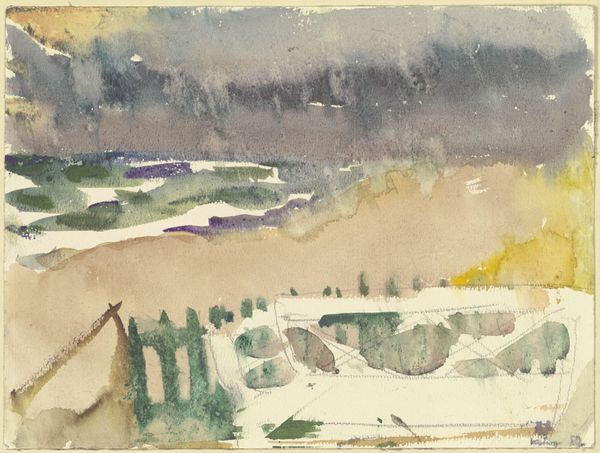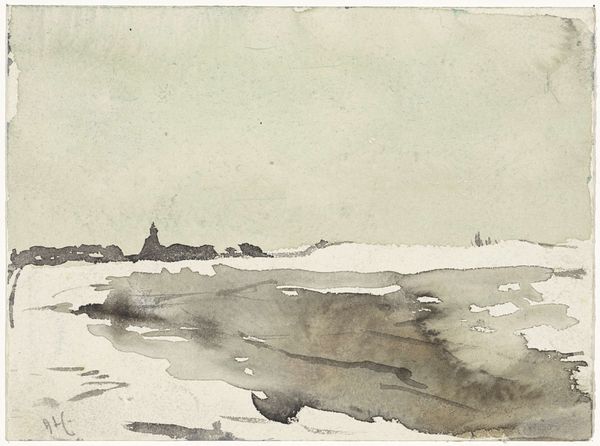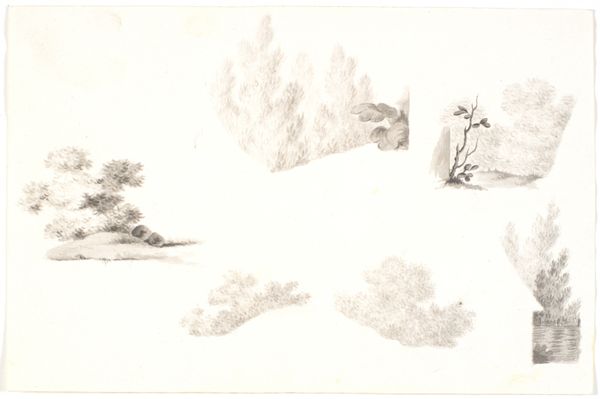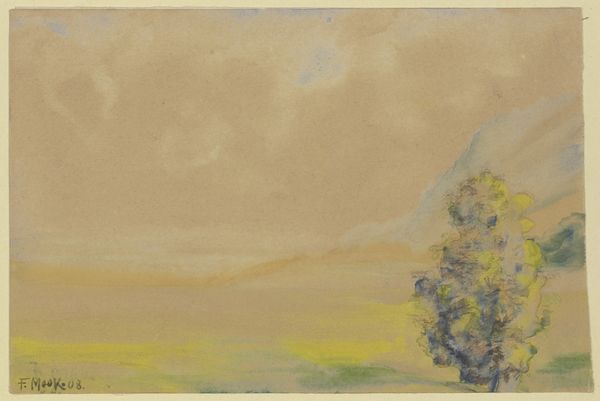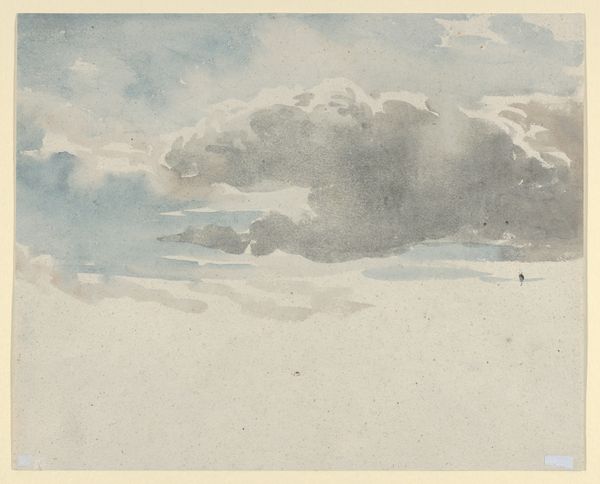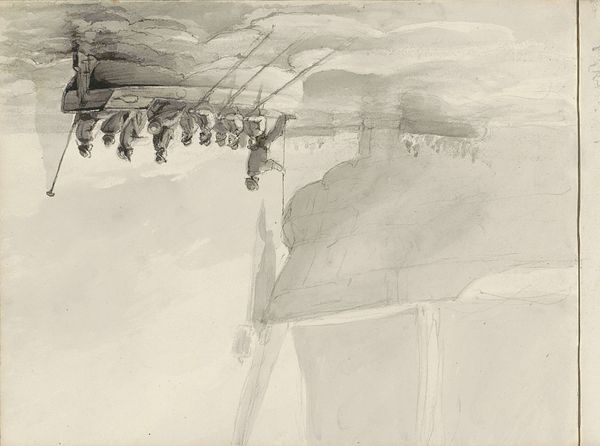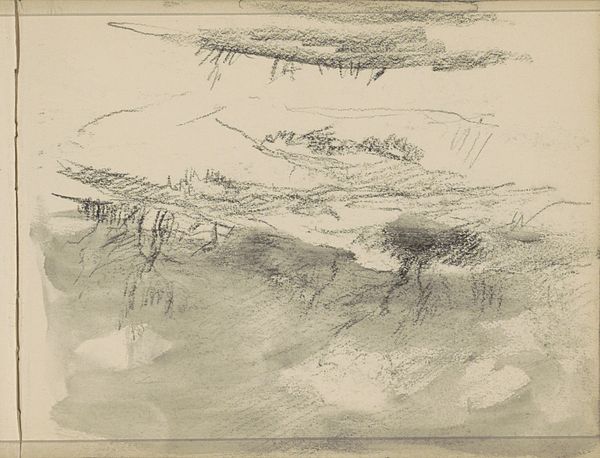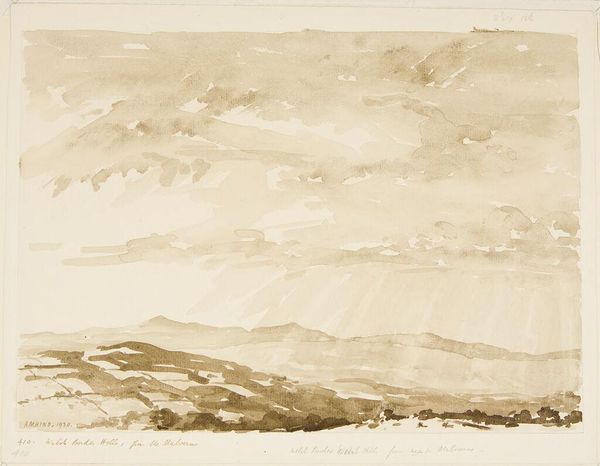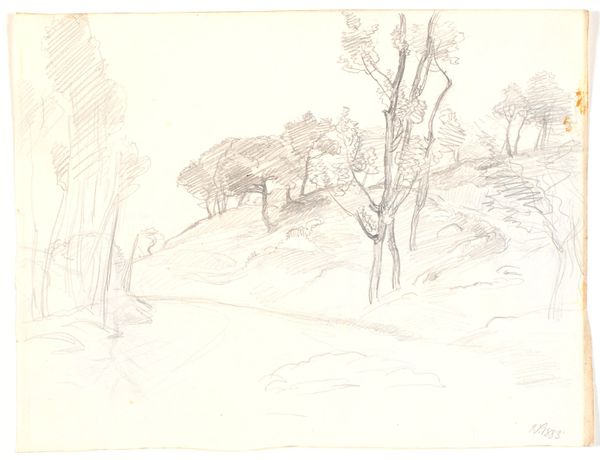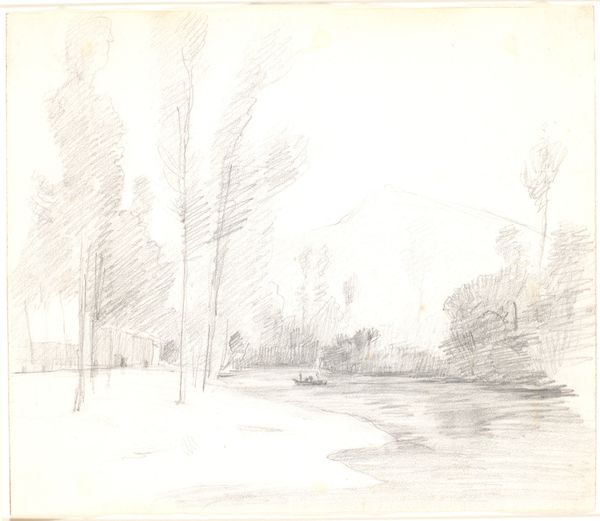
Dimensions: 250 mm (height) x 349 mm (width) (bladmaal)
Curator: Claus Johansen created this landscape sometime between 1892 and 1943. It’s currently housed here at the SMK, Statens Museum for Kunst. What’s your initial take on this piece? Editor: Stark. It's an interesting combination of the stark greyscale and impressionistic form – it gives me the feeling of a fleeting moment, captured in the barest way possible. Curator: Exactly. Johansen’s plein-air work suggests a specific kind of labour. This looks like it might be watercolor, which inherently allows for an impression of speed and on-the-spot work, not to mention the transportation and manufacturing that goes into producing watercolour paints at all. Editor: I appreciate your material focus! Thinking about that, and the landscape itself – landscapes as a genre always invite me to consider humanity’s relationship with the land, specifically our impact on it. Even an image that might appear apolitical is embedded in the politics of its time and place. Curator: How so? I mean, this feels very internal, quite intimate…almost as if these barren looking trees are reaching for connection somehow, but without any sense of optimism. Editor: Even in this quiet scene, we must recognize who had access to these landscapes, who had the leisure to paint them, and the legacy of colonialism inherent in the representation and ownership of land. Who had the ability and access to manufacture paint as you described? Who owns the space upon which the raw materials were obtained? These things matter! Curator: I can agree that thinking about material production inevitably introduces broader issues of access. Considering the material processes and resources required is so central, offering us insight not just into its creation but also, as you say, the social relations intertwined with art. Editor: Absolutely. So, when viewing "Landskab med træer", perhaps we should also see a ghostly premonition regarding future labour laws, colonial acts and manufacturing developments. It urges us to think critically about whose stories are being told, and whose are missing. Curator: Well, those are some good final considerations; I'm happy that a quiet little landscape can actually provoke these bigger questions! Editor: Always! Thanks for expanding on that, it's amazing how looking closely can help unravel threads of thought.
Comments
No comments
Be the first to comment and join the conversation on the ultimate creative platform.
